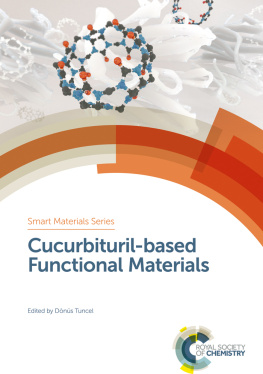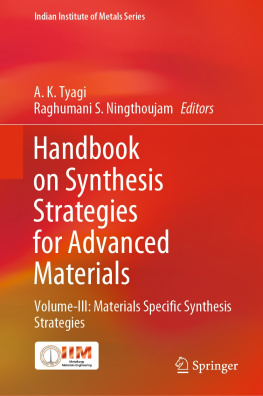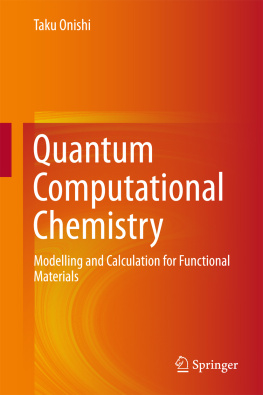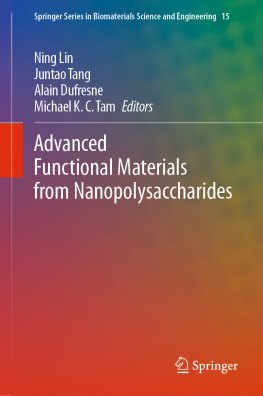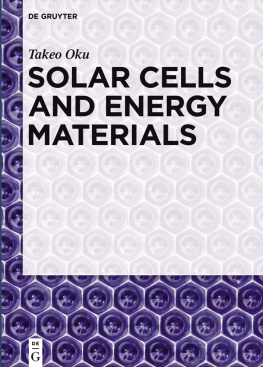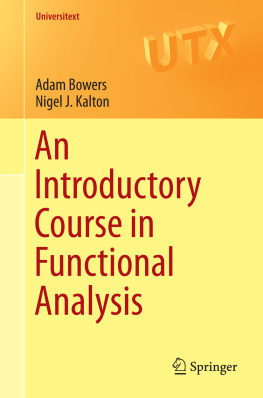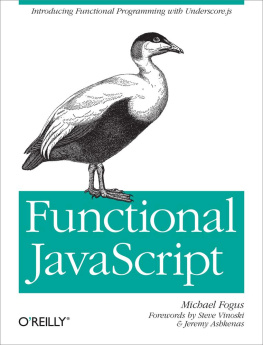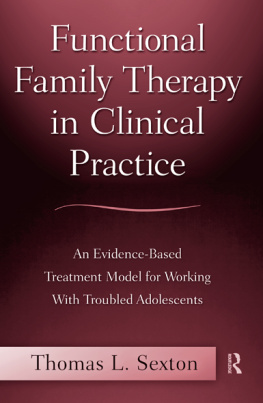Dönüs Tuncel - Cucurbituril-based Functional Materials
Here you can read online Dönüs Tuncel - Cucurbituril-based Functional Materials full text of the book (entire story) in english for free. Download pdf and epub, get meaning, cover and reviews about this ebook. City: Cambridge, year: 2019, publisher: Royal Society of Chemistry, genre: Home and family. Description of the work, (preface) as well as reviews are available. Best literature library LitArk.com created for fans of good reading and offers a wide selection of genres:
Romance novel
Science fiction
Adventure
Detective
Science
History
Home and family
Prose
Art
Politics
Computer
Non-fiction
Religion
Business
Children
Humor
Choose a favorite category and find really read worthwhile books. Enjoy immersion in the world of imagination, feel the emotions of the characters or learn something new for yourself, make an fascinating discovery.
- Book:Cucurbituril-based Functional Materials
- Author:
- Publisher:Royal Society of Chemistry
- Genre:
- Year:2019
- City:Cambridge
- Rating:3 / 5
- Favourites:Add to favourites
- Your mark:
- 60
- 1
- 2
- 3
- 4
- 5
Cucurbituril-based Functional Materials: summary, description and annotation
We offer to read an annotation, description, summary or preface (depends on what the author of the book "Cucurbituril-based Functional Materials" wrote himself). If you haven't found the necessary information about the book — write in the comments, we will try to find it.
Cucurbituril-based Functional Materials — read online for free the complete book (whole text) full work
Below is the text of the book, divided by pages. System saving the place of the last page read, allows you to conveniently read the book "Cucurbituril-based Functional Materials" online for free, without having to search again every time where you left off. Put a bookmark, and you can go to the page where you finished reading at any time.
Font size:
Interval:
Bookmark:
CHAPTER 1
Introduction: Cucurbituril-containing Functional Materials in the Context of Smart Materials
DNS TUNCEL
a Department of Chemistry, Bilkent University, Ankara 06800, Turkey
b UNAM National Nanotechnology Research Center, Institute of Materials Science and Nanotechnology, Bilkent University, Ankara 06800, Turkey
Email:
Smart materials can sense and react to external stimuli by adapting their existing properties to new ones. They have ability to gather together many important and interesting features so that these features may act in accord in order to achieve important tasks. Applied external stimuli can be generalized as chemical, physical and biological. The most frequently used chemical stimuli are pH, ionic strengths, moisture, redox and competitive guests. Stress, temperature, electric and magnetic fields, and light can be given as examples of physical stimuli, while biochemical stimuli include antigens, enzymes, ligands or other biochemical agents.
The responses against external stimuli can be physical (changes in the color, shape, size etc.), chemical (changes in the functional groups, reactivity, hydrophilicity etc.) or changes in mechanical properties. Because the responses give rise to large macroscopic changes that are reversible and can be repeated many times, these materials can be used in a wide range of applications such as sensors, actuators, artificial muscles, catalysis, smart interfaces, tissue engineering, biosensors, diagnostics, drug delivery, robotics and biomimetics.
Supramolecular smart materials constructed through noncovalent interactions, such as hydrogen bonding, stacking and hydrophobic interactions, have a dynamic nature and can undergo spontaneous and continuous assembly/disassembly processes under certain triggers. Owing to the dynamic and reversible nature of noncovalent interactions, these materials have the ability to adapt to their environment and possess a wide range of interesting features, including degradability, shape-memory and self-healing. The selection of the noncovalent interactions and building blocks used in the construction of the supramolecular materials are crucial as the nature of noncovalent interactions and the structure of the building blocks determine the degree of stimuli-responsiveness and the smartness of the resulting materials. Therefore, the supramolecular approach allows the design of materials by incorporating the desired functionalities and features for targeted applications.
In the context of the supramolecular approach, hostguest inclusion complexes stabilized by hydrophobic effect are quite attractive inasmuch as the high selectivity between the host and guest molecules provides dynamic but strong interactions. Using this approach, small building blocks can be brought together to construct more complicated structures with desirable topological diversity and programmable functions for specific applications. Their assembly and the disassembly processes in general can be controlled by applying appropriate triggers.
The most common macrocycles used as host molecules are cyclodextrins,
In recent years, CB[n]-containing functional materials have been receiving increasing attention due to their versatile applications in areas including but not limited to theranostics, photonics, self-healing, sensing and catalysis. The abundant hostguest cucurbituril (CB) homologues allow one to prepare a variety of functional and smart materials including molecular switches, reversible, stimuli-responsive hydrogels, porous organic frameworks, nanoparticles, micelles, vesicles, colloidosomes. Because its cavity is larger than other homologues, CB[8] is highly appealing for complexation-induced nanostructure formation. In this regard, the ability of CB[8] to form ternary complexes with suitably sized and functionalized guests has been extensively utilized in the preparation of nanoparticles, stimuli-responsive reversible micelles, vesicles and capsules for the encapsulation, delivery and controlled release of drugs.
In this regard, this book aims to provide a comprehensive overview of cucurbituril-based functional materials. It starts with Chapter 2, on CB chemistry, which provides a detailed account of the synthesis, isolation, formation mechanisms, and structural and physical properties of CB homologues, derivatives and functional CBs. The discussion also contains some elements of the historical background of CBs.
Chapter 3 summarizes the key roles of the carbonyl groups containing portals of CBs on the hostguest inclusion complex formation. Due to the presence of carbonyl groups, the portals of CBs are partially negatively charged, and, accordingly, this chapter presents research work showing that electrostatic interactions may have considerable effects on the stability of complexes formed by CB hosts.
In Chapter 4, the preparation of cucurbituril-based pseudorotaxanes, rotaxanes and polyrotaxanes is discussed with selected examples. This includes notions of self-sorting, which enables the setup of homo- and hetero(pseudo)rotaxanes. The implications of thermodynamic and kinetic control are briefly showcased as well. In the main part, these assemblies are discussed in the context of stimuli-responsive systems, whose supramolecular chemistry and functionality can be controlled by using chemical inputs (pH, ions), redox signals or light. Finally, some applications are highlighted, such as drug delivery and molecular information processing.
Chapter 5 deals with hybrid nanomaterials of CBs with metals (Au, Ag, Pd, Pt), lanthanides and silica. These nanomaterials are either prepared in the presence of CBs (CB-assisted synthesis) or have been first prepared before CBs are used as capping agents to stabilize the resulting nanostructures. The plasmonic and SERS applications of CB-Au and CB-Ag hybrid nanoparticles and electrocatalytic applications of CB-Pt and CB-Pd are also presented.
Chapters 6, 7 and 8 give an overview on the stimuli-responsive supramolecular assemblies constructed mainly through hostguest complexation of CB homologues. Particularly, the ternary complex formation ability of CB[8], with suitably sized electron donor and acceptor guests, has been utilized in those assemblies. Chapter 6 focuses on the preparation and properties of stimuli-responsive reversible hydrogels and their applications in various areas, including drug delivery, wound dressing and healing, tissue engineering, diagnostic devices, wood conservation, adhesives, stretchable and wearable electronics, injection and printing substances. In the follow-up chapter (Chapter 7), the ability of CB[8] to form ternary complexes with suitably sized and functionalized guests has been demonstrated in the preparation of single-chain nanoparticles, stimuli-responsive reversible micelles and pH-responsive prodrug micelles for the encapsulation, delivery and controlled release of drugs and bioactive nanostructures based on peptide amphiphile vesicles, as well as reversible and stimuli-responsive microcapsules prepared to make use of the advantages of microfluidics. Nanostructures prepared from functionalized CB derivatives are also discussed.
Chapter 8 continues the discussion on supramolecular frameworks formed through the ternary complexes of CBs. The authors demonstrate how self-assembly provides a straightforward strategy for the construction of water-soluble porous supramolecular organic frameworks (SOFs) from rationally designed rigid multitopic molecular components and CB[8]. Using this strategy, a variety of two-dimensional honeycomb, square, and rhombic SOFs have been constructed, some of which exhibit interesting absorption and sensing functions.
Next pageFont size:
Interval:
Bookmark:
Similar books «Cucurbituril-based Functional Materials»
Look at similar books to Cucurbituril-based Functional Materials. We have selected literature similar in name and meaning in the hope of providing readers with more options to find new, interesting, not yet read works.
Discussion, reviews of the book Cucurbituril-based Functional Materials and just readers' own opinions. Leave your comments, write what you think about the work, its meaning or the main characters. Specify what exactly you liked and what you didn't like, and why you think so.

